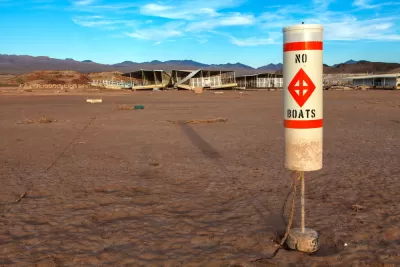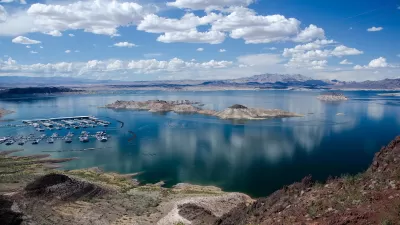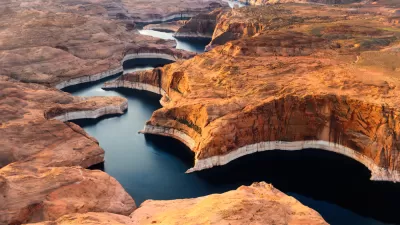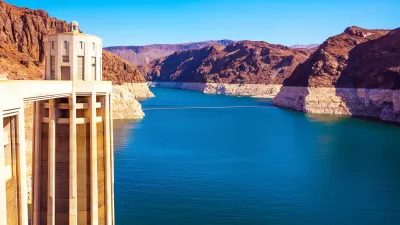While the historic agreement set a new precedent for water rights, its inherent flaws, growing demand, and the threat of climate change make much of it obsolete for today’s needs.

The first treaty in U.S. history to bring together more than two states, the Colorado River Compact turns one hundred this month. But, as Jonathan Thompson writes in High Country News, the historic seven-state agreement is “showing its age,” no longer a viable document for addressing the water shortage facing communities along the Colorado River today.
The article analyzes the compact’s history, its most relevant provisions, and how today’s policymakers can redress the mistakes made in those early days and plan for a more resilient future. The treaty was full of holes from the beginning, Thompson explains. “Tribal nations were not only left out of the Compact and negotiations, but their senior and therefore stronger water rights were discounted altogether.” Thompson asserts that “The exclusion was far worse than a gross oversight; it was a blatant attack on tribal sovereignty.”
Thompson adds that the compact was based on flawed or purposely misleading assumptions about water supplies and needs. Yet “The document’s framers never even considered the possibility that the river’s flows would diminish over time, as is now the case thanks to climate-change-induced aridification.” The original document allocated 16 million acre-feet of water “in perpetuity” to irrigation, calling it 80 percent of the river’s flow, a conscious overestimate even at the time.
According to Thompson, “Now that it’s reaching its centennial, perhaps it’s time for the Colorado River Compact to retire, and for the river’s users — all of them — to sit down and negotiate a new pact for a changing world.”
FULL STORY: On its 100th birthday, the Colorado River Compact shows its age

Planetizen Federal Action Tracker
A weekly monitor of how Trump’s orders and actions are impacting planners and planning in America.

Maui's Vacation Rental Debate Turns Ugly
Verbal attacks, misinformation campaigns and fistfights plague a high-stakes debate to convert thousands of vacation rentals into long-term housing.

Restaurant Patios Were a Pandemic Win — Why Were They so Hard to Keep?
Social distancing requirements and changes in travel patterns prompted cities to pilot new uses for street and sidewalk space. Then it got complicated.

In California Battle of Housing vs. Environment, Housing Just Won
A new state law significantly limits the power of CEQA, an environmental review law that served as a powerful tool for blocking new development.

Boulder Eliminates Parking Minimums Citywide
Officials estimate the cost of building a single underground parking space at up to $100,000.

Orange County, Florida Adopts Largest US “Sprawl Repair” Code
The ‘Orange Code’ seeks to rectify decades of sprawl-inducing, car-oriented development.
Urban Design for Planners 1: Software Tools
This six-course series explores essential urban design concepts using open source software and equips planners with the tools they need to participate fully in the urban design process.
Planning for Universal Design
Learn the tools for implementing Universal Design in planning regulations.
Heyer Gruel & Associates PA
JM Goldson LLC
Custer County Colorado
City of Camden Redevelopment Agency
City of Astoria
Transportation Research & Education Center (TREC) at Portland State University
Jefferson Parish Government
Camden Redevelopment Agency
City of Claremont





























